What is the history of the golf cart? Who invented the golf cart? When was the golf cart invented? I’m glad you asked!
The Who’s Who Begins With Lyman Beecher
In 1932, a man named Lyman Beecher cleverly designed the first electric cart initially intended as a convenience for the handicapped. His invention was later adapted in 1954 by an innovator named Merle Williams, who was known for his contribution to electric cars during World War II. Merle repurposed the electric carts for golf, effectively creating the first electric golf cart.
This ingenious idea revolutionized the game of golf. Golfers could now easily transport their golf bags and move around expansive golf courses without much hassle. The electric golf cart was thus born, although some state that it could more accurately be called the golf car.
Emerging corporations like Yamaha, Club Car, and E-Z-Go played key roles in popularizing these motorized, self-propelled vehicles within the golf industry. These companies invested their resources into motorizing the golfing experience, leading to a significant positive change in the sport.
Today, motorized golf carts are considered essential on every golf course worldwide. The idea that was not initially conceived for golf has become synonymous with the sport itself, thanks to Beecher’s and Williams’ vision and the consequent development and marketing by major players like Yamaha, Club Car, and E-Z-Go.
No golfer today can imagine a world without the convenience and benefits brought by these electric golf carts. Their ease-of-use, coupled with their environmental friendliness, has indeed made golfing a much more enjoyable experience.
Hence, while its origin lies outside the golfing sphere, the history of the golf cart is very much entwined with this beloved sport’s evolution. Its story is a testament to human innovation – an idea conceived for one purpose, and gloriously evolved for another.
The following list of pioneers is by no means complete nor does it record ALL the brands and models, but the carts listed below are some of the better-known contenders.
History Of The Golf Cart – List by Years
- 1932 – Beecher Rickshaw
- 1938 – Custer Motorized WheelChair
- 1939 – Taefel Autoette
- Difficulty Gaining Acceptance
- 1951 – Marketeer
- 1952 – Cushman
- 1954 – E-Z-Go
- 1955 – Taylor-Dunn
- 1957 – Walker Executive
- 1958 – Club Car
- 1959 – Tripco
- 1963 – Harley Davidson
- 1970 – Melex
- 1978 – Yamaha
Beecher Rickshaw
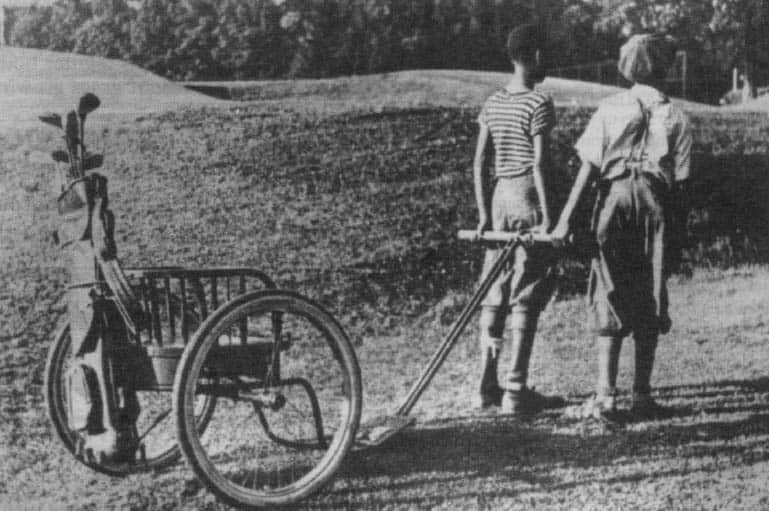
In 1932, a breakthrough in the golfing world occurred which significantly altered the game of golf as we know it. Lyman Beecher, a golf enthusiast with a knack for innovation, invented the first-ever golf cart. Despite his frailty and worsening health, his love for the game drove him to create an invention that not only enhanced his golfing experience but also paved the way for the creation of electric carts.
Originally, the golf cart was designed to be physically tugged by two men across the vast and uneven terrain of golf courses. This golfing innovation was deemed useful especially in taking Beecher up and down the challenging landscape of golf courses—specifically the hilly Biltmore Forest Country Club course in North Carolina.
However, the caddies were not too pleased with this aspect of the golf car. They felt that the heavy task of pulling the cart up and down the course was simply too demanding and demeaning. This feedback fueled Beecher’s quest to upgrade his design. Subsequently, he decided to conceptualize a gasoline-run golf cart. Although this was a step ahead in the history of the golf cart, it came with its own disadvantage: it was too noisy.
Continuing his pursuit for a more efficient cart, Beecher went on to invent a three-wheel cart that ran on storage batteries— a commendable leap toward an electric golf cart and making Beecher’s design the first electric golf cart. Remarkably, Beecher never sought a patent for his design. Instead, he opted to utilize it to fulfil his passion for golf, setting a significant milestone in the evolution of the game.
Fast-forward to the 1960s, when Beecher, then over eighty years old, experienced a minor accident involving his golf cart wherein it tipped over into a sand trap at a golf course, resulting in a broken arm. At the advice of his doctor, Beecher retired from golfing. Subsequently, his golf cart also retired and mysteriously vanished after he relocated to Florida for the twilight of his life.
The seed sown by Beecher in 1932, bloomed over the years with various golf car manufacturers such as Yamaha, E-Z-GO, and Marketeer introducing their versions of powered golf carts. In 1954, Merle Williams, inspired by Beecher, developed a self-propelled model of the electric cart. The ethos of motorization in golf carts took flight, and it continues to soar, shaping the future of the golfing industry.
Indeed, Lyman Beecher’s groundbreaking invention has revolutionized the game of golf, providing ease and comfort for golfers and transforming golf courses across the globe. His designs marked a pivotal point in golf cart history, paving the way for further innovation and advancements in this sector. With the advent of power-driven golf carts, golf is now much more accessible to individuals of all ages and health statuses.
Custer Motorized WheelChair
Levitt Luzern Custer, in the late 1930s, was granted a patent for the production of the Custer Park Car, marking a pivotal point in the history of the golf cart. The cart came in two versions, gasoline and a revolutionary electric version, prefiguring the start of the electric golf era.
The electric model was tantamount to a motorized wheelchair, becoming popular within park environments for its unique all-terrain balloon tires – a distinct advantage that positioned it as the first golf cart featuring unprecedented adaptability inherent in modern golf cars.
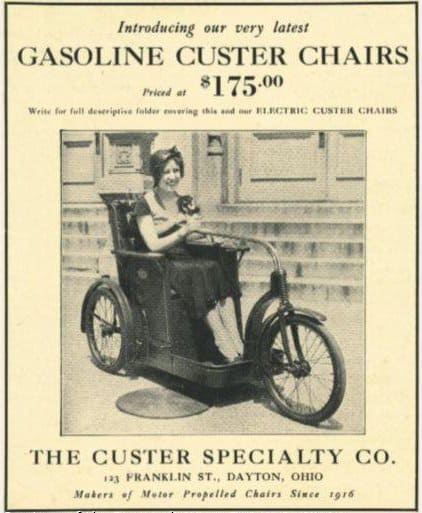
This battery-powered electric golf cart was ahead of its time, producing no emissions and emitting a minimal sound during operation. Innovatively, Custer engineered a driverless operating system, which could automatically start and stop the cart, a notable precursor to today’s self-propelled golf carts.
In his inventive endeavors, Custer developed a street- and indoor-friendly three-wheeled vehicle, a smooth-running cart that could maneuver the narrow walkways of hospitals or navigate the tricky bends of a golf course.
These cost-effective, compact golf carts could easily be put away on a back porch and granted hospital-bound individuals the freedom to move around. Catering to different commuting needs, the gasoline model was capable of covering seventy-five miles per gallon, accommodating the mobility requirements of a modern golfer.
Custer’s ground-breaking innovation set the stage for companies like Yamaha, E-Z-GO, and Marketeer to further revolutionize the game of golf. The year of 1932 marked the birth of the Custer Park Car, which significantly influenced Lyman Beecher’s 1954 models, solidifying Custer’s unmatched significance to the golf cart industry.
Tafel Autoette
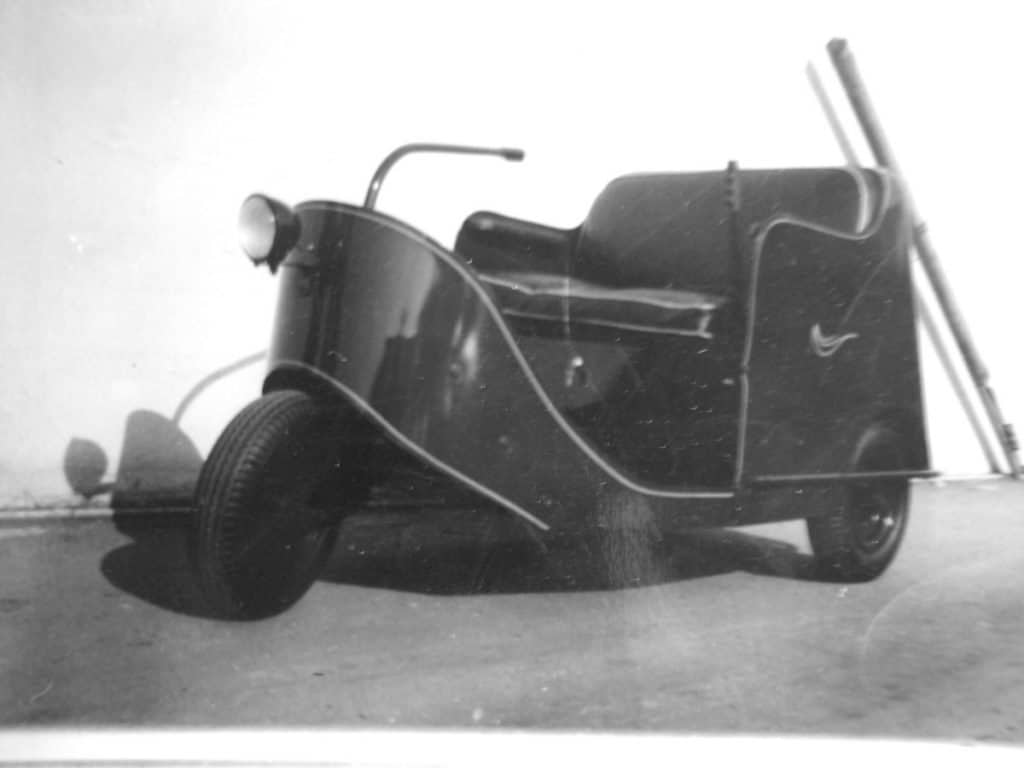
The late 1930s saw Robert Tafel revolutionizing motorized transport. He began with the Custer Invalid Chair, an aid for World War I veterans. Tafel reengineered this chair into a self-propelled three-wheeled, 2-seat, 24-volt electric vehicle, thus birthing the “Autoette.”
Robert Tafel’s vision and application set the stage for the electric golf cart revolution, an impact that’s still felt in golf today with companies such as Yamaha, Club Car, and E-Z-Go building on his groundwork.
Newton Blood was instrumental in the company’s ascend to high profitability, acquiring Tafel Engineering by 1949 through Blood Sales Co.
Royce Seevers, who was initially a welder at a rival electric car company, joined the ranks of Blood Sales. His rise to partner from a tradesman echoes the era of Merle Williams, another remarkable figure in the electric car industry. Seevers eventually bought Autoette from Wayne Manufacturing in 1958, a year that saw other prominent launches like the Marketeer by another manufacturer.
Thus, while Royce Seevers is often credited for his contributions to Autoette, it’s Robert Tafel’s pioneering role that lays the foundation for the modern electric golf cart seen on every golf course. As we commemorate the golden era of electric golf cart development, we must remember the innovative spirit of Tafel and others like him, which shaped the game for every golfer.
Difficulty Gaining Acceptance
The golf cart was now being seen as a lucrative business by many entrepreneurs, but they were often expensive. Most golf enthusiasts preferred using their own two feet and an occasional caddie instead. The golf courses were also routinely banning the carts citing noise and smelly exhausts. In some cases, you actually needed a note from your doctor to get approval for using a motorized vehicle on the course.
Golf carts didn’t start gaining acceptance until the late ‘50s, and the country clubs across the U.S. began to realize the profit potential. The golf cart began to be seen as not only a draw for more memberships at the club but as a rental revenue from golfers who couldn’t afford a personally owned vehicle. We are talking electric carts at this point as the gasoline carts were still considered too loud and smokey.
The electric carts proved to be a real headache for the club owners that got into the rental business early on. The technology did not exist to automatically turn off the chargers when the battery was finished charging. The result was a lot of boiled batteries and took some employees to monitor the progress overnight. The efficiency of the batteries was also lacking. There were no deep cell rechargeables at the time, and it was difficult to get an entire 18 holes of golf out of a charged set of batteries.
Gasoline-powered carts were tried next to eliminate the litter of dead electric carts strewn across the last eight holes. The advantage of the gas cart was that as long as you supplied gasoline, you have more distance. The downside of these (besides the noise and smoke) was that they broke down a lot. The wear and tear of one round of golf after another would wear out the small 2 cycle engines in a short time.
The Marketeer
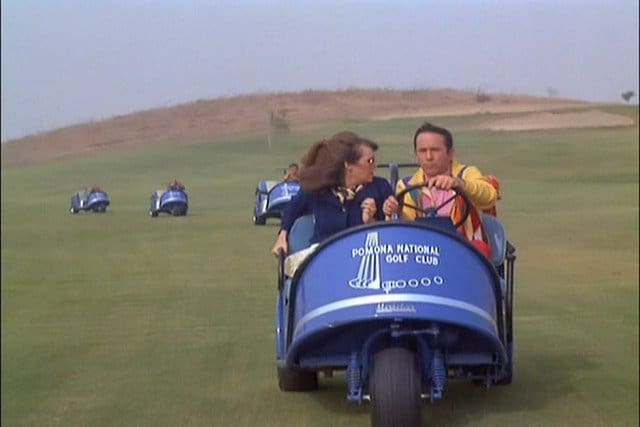
Once again we return to Long Beach, California for another popular brand of cart. World War II brought a brand new surge in electric carts due to gasoline rationing. Merle Williams built his own solution to the problem…an electric cart for going to the market and short commutes. It was so popular with the other residents that he started his own brand “Marketeer” The company began producing utility trucks, and in early 1951 they designed their first golf cart. The model 425 was featured in a golf cart chase as see above for an episode of the television series “Get Smart.”
In 1965, Merle and Peggy Williams sold the Marketeer company to Westinghouse. In an attempt to reorganize the corporate strategy, Westinghouse sold the electric car division, and the new product was labeled HMK Marketeer. When the new company began to unravel, Westinghouse took the division back and later sold it to Nordskog. For 4 years the Marketeer was sold as the Nordco Marketeer, and, following the death of the owner, Bob Nordskog was sold to U.S. Electricar. In 1996 Legend Electric Vehicles of Redlands acquired the company and in 1999 was purchased by Columbia Par Car. Columbia had already obtained Harley Davidson Golf Cars from AMF in 1982.
Cushman
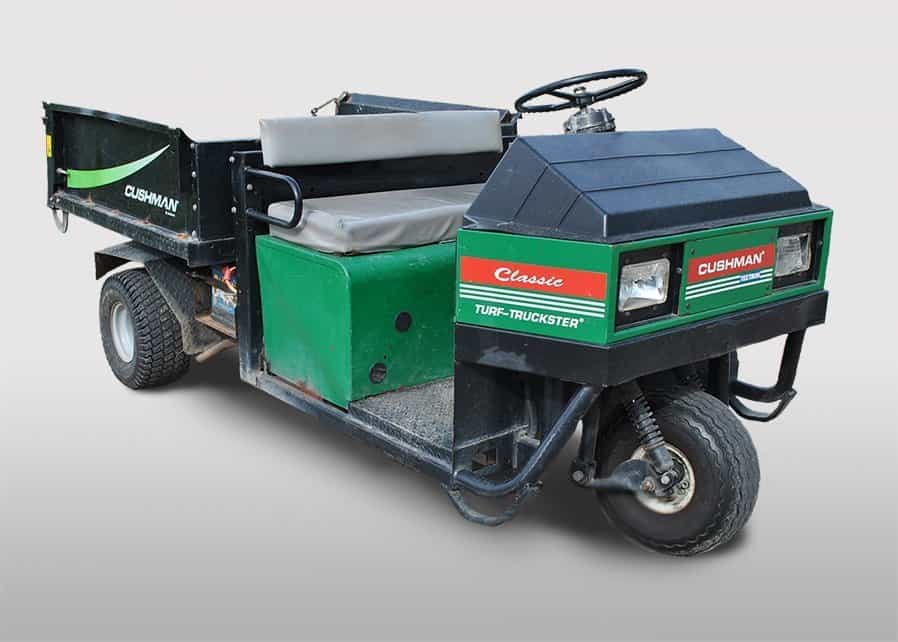
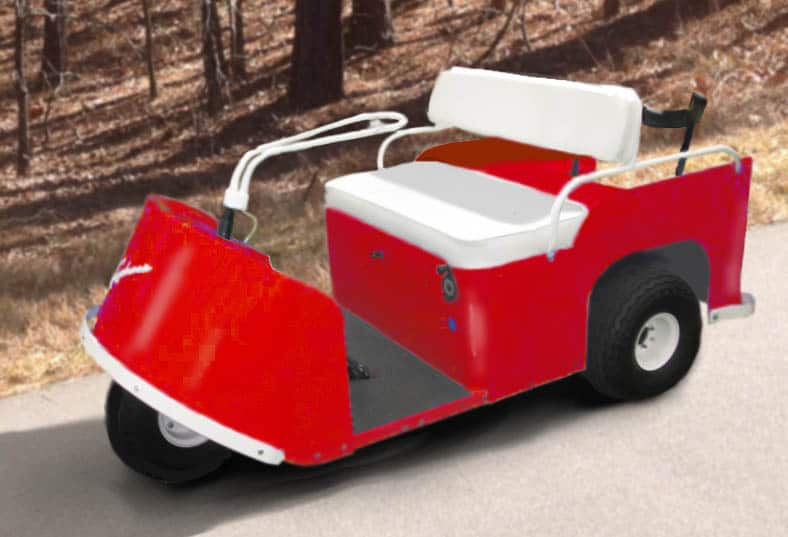
The Truckster was introduced in 1952, but may not have borne the name “Truckster” at this time.
In 1955 Cushman rolled their first three-wheeled electric carts off the line. The “Golfster” remained as 24-volt and 36-volt electrics until the gas model premiered in 1961. Cushman received a good deal of publicity when President Eisenhower began using a Golfster on doctor’s orders after a heart attack.
Cushman Motor Company was founded in 1901 in Lincoln, Nebraska, and became a division of the Outboard Marine Corporation in 1962. Ransomes (of Great Britain) purchased Cushman in 1989, and Ransomes was acquired by Textron. OMC ceased production of the golf cart in 1975 in favor of continuing the utility vehicle line.
E-Z-Go
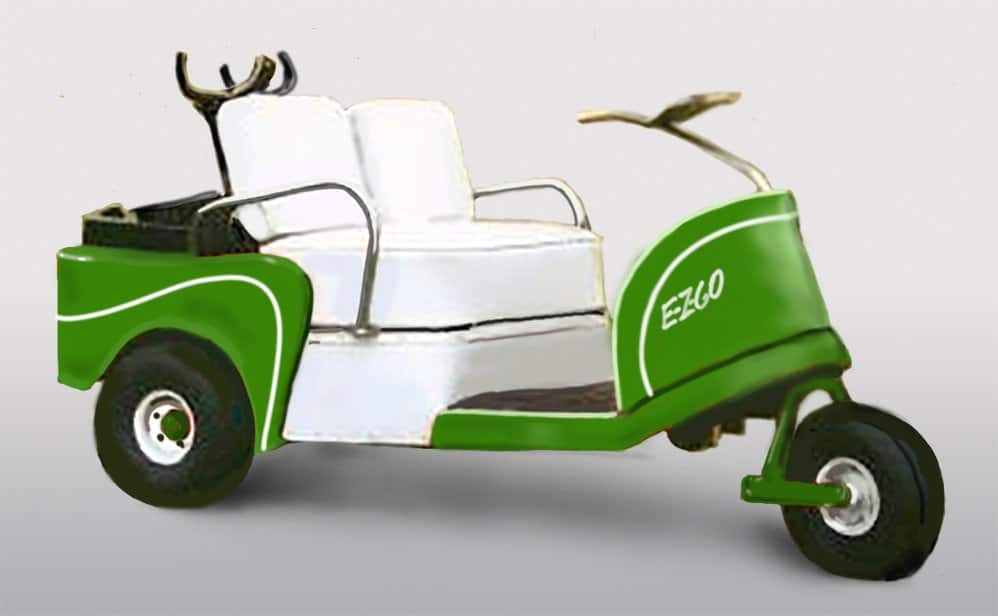
On June 13th, 1954 Brothers William and “Bev” Dolan started to make electric carts in their garage. They used surplus 24-volt electric motors initially intended to operate the wing flaps on B-17s and powered them with a 36-volt battery pack. As the business took off, they decided to move the operation into a machine shop run by Paul Corley in Grovetown, Ga.
In 1957, Paul decided that he and his new partner George Smith didn’t need the Dolans and locked them out. Paul and George started their own golf cart company called Pargo, and the Dolan brothers moved their business to 100,000 sq. ft. cotton warehouse.
In 1960 Bill and Bev sold their company to Royal Little, the head of Textron. Bev and Billie stayed on to run the business after Royal retired at the end of 1960. Textron realized Bev’s management abilities were extraordinary and had him take over running the Polaris division, and then the Homelight branch. Bev hired a new president for E-Z-Go, and it didn’t sit well with his brother Bill and some of the other execs. They felt Textron, and mainly Bev wasn’t responsive to the ideas to improve and innovate the current golf cart. The steel frames were also subject to rust. Earlier models had actually failed due to broken frames. Bev flatly rejected designs for a newer model E-Z-Go and ordered the designs destroyed.
Billy Dolan and three others began to plan a new company to utilize some of the design features they wanted and started to scout likely candidates to acquire. They eventually came up with a business plan that they presented to the Johns Manville Company, owner of Club Car, through a third party.
Bill and seven other employees signed a single letter of resignation and handed it to Fritz Myers at Bush Field Airport, Augusta.
Taylor-Dunn
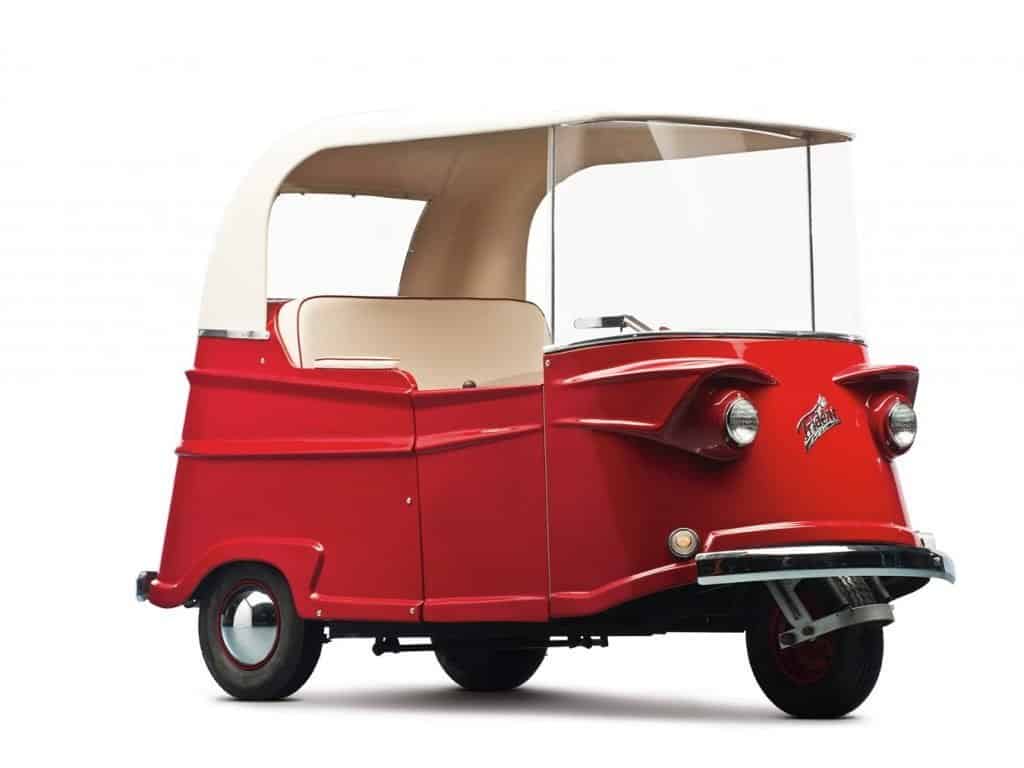
R. D. Taylor, SR was a southern California farmer who founded Taylor-Dunn Manufacturing in 1949. He owned a chicken ranch on West Ball Road in Anaheim, California and built handcarts to carry feed. The company is still located on the property of the original ranch. He made the decision to add to his farm revenue by selling supplies and equipment to other local farmers.
When the handcarts were used to carry heavier and heavier loads, his fellow farmers asked if he could make a motorized cart to make their tasks easier. He made the first motorized electric in 1951 for his personal use on his own chicken ranch. Since it worked well for him, he then began making and selling electric trucks to other farmers and ranchers. Mr. Taylor had Fred A. Dunn join the business, and four years later they changed the name to Taylor-Dunn® Manufacturing Company.
Taylor-Dunn came out with a 3 wheel, 24-volt electric car in June of 1955. The Model “PG” was designed for travel around the neighborhood for shopping and visiting. It came standard with tiller steering and both headlights and taillights.
In 1959, Taylor-Dunn introduced the model “R” Trident. The trident was an upgrade from the model PG as it had not only headlights and taillights, but also turn signals that made it even safer to drive around the neighborhood. The Trident was manufactured until 1963.
In 1961, Taylor-Dunn introduced their first golf cart, the Tee-Bird line. This was a 36-volt cart that came in a model 2336G that was a three-wheel cart and model 2347G a four-wheel cart. They also made a fiberglass model Eagle III that had very classic styling. These models were made from 1961 to 1969.
Between 1966 and 1968, Taylor-Dunn made a single passenger golf cart called the “Canary” that was produced in only one color…Canary yellow. This was the grandfather of single passenger industrial carts. The Tee-Bird line ran until they built their last golf cart in 1985. In 1970 they made their first “R” series carts that were 36 volt – models 23349 a four-wheeler and model 2339R a three-wheeled cart.
Always interested in keeping up with changing needs, In 1970 Taylor-Dunn introduced the model GT348 four-wheel and the GT338 three-wheel. These were available with an optional diamond plate body. This model was produced until 1972. 1972 brought the introduction of the new Tee-Birds, model GT360 and GT361. These were made until 1975 when they introduced the model GT370 and GT371 which featured an angular nose that remained in production until 1985.
Taylor-Dunn continues to manufacture carts for the industry from ground support vehicles and dump trucks to personnel carriers and utility vehicles. They make electric trams such as are used in airports to transport people and equipment between terminals. They also build stock chasers that are designed to be narrow and highly maneuverable for use in warehouses when staff needs to be able to get close to the racks filled with supplies.
In March of 2004, Yale/Chase purchased the local parts sales and service divisions from Taylor-Dunn.
Walker Executive Golf Car
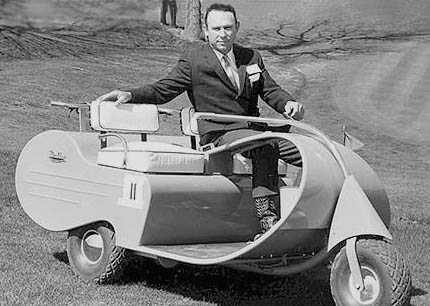
Max Walker is credited with producing the first gasoline-driven Golf cart in 1957. He developed his cart as a solution to the unevolved batteries not lasting for a full round of golf. Walker built a small factory on his farm about 300 feet from his house and used his spare time (at night) to make the Executive.
When battery life began to improve, Max opted to pursue other challenges and sold the patents and rights in 1963 to a Salina, Ks group. In all, there were only around 1000 carts built.
Club Car
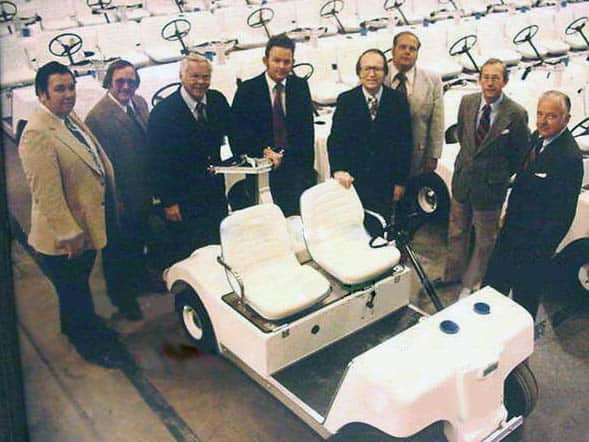
Orville Homer Landreth of Igloo Products Inc.(best known for coolers) produced their version of the golf cart in 1958 – The Club Car Golf Buggy. Landreth owned one-third of Igloo, and after separating from the company in 1960, Landreth took the rights to the Club Car as part of his settlement. He continued to build golf carts for two more years before selling the business to William Stevens in 1962. Stevens moved the tooling and inventory to Augusta, Georgia, not too far from the E-Z-Go plant.
The cart was then advertised as the Stevens Club Car and remain in a three-wheel configuration until the four-wheel Caroche model came out in 1970.
The company was sold again in 1973 to the Johns Manville Company, and in 1978, Billy Dolan and the other ex-pats from E-Z-Go purchased the company. They bought all trademark patents and rights under the name CC Manufacturing and continued production of the Caroche until the model DS was introduced in 1981. Ingersoll Rand acquired the company in 1995.
Club Car and E-Z-Go were in a bitter rivalry for many years, and the same year Billy and Bev Dolan parted ways, Yamaha entered the Market.
Tripco
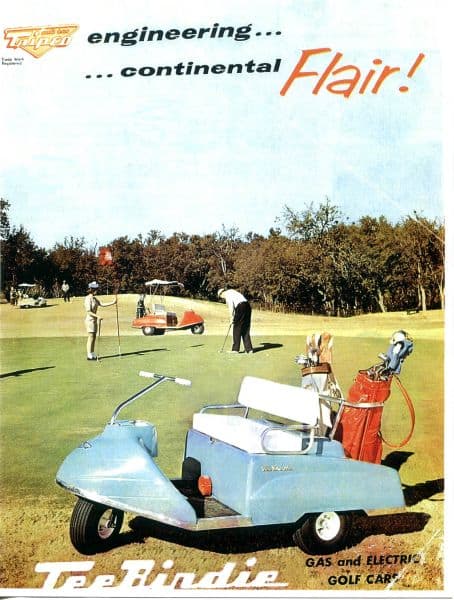
The Tripco (Tri Powered Corp) Tee Birdie was introduced in the late 1950s in Austin, Tx and features a 36-volt electric version and a 7-hp Kohler powered version. The cart was designed by Bill Bales, and the plant closed in the 1960s. After the T-Birdie plant closed in Galva, Il, Keith Huber purchased the remaining inventory and produced the Flagmaster. It was named after his invention, a spring-loaded signaling flag to be used on tractors back before they had lights. Keith Huber is credited with creating the first electronically controlled acceleration for golf carts. Unfortunately, it was this innovation that caused the failure of the company, because some of the controllers failed spectacularly resulting in runaways or fires. Keith Huber’s death in 2008 was the result of a tractor rollover.
Harley Davidson
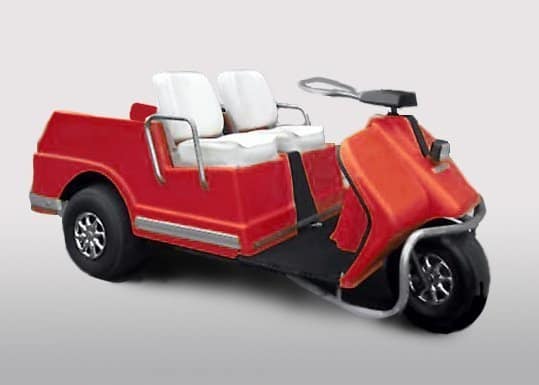
Everyone knows Harley Davidson makes motorcycles, but few people have any idea that they once made a fantastic line of golf carts starting way back in the ’60s. Harley Davidson manufactured golf carts with a distinctive “classic” body style that changed little over the 19 years they were produced.
The first carts were 3-wheeled machines, introducing the more sure-footed 4-wheel version in the ’70s. In 1963, they were powered by a 245 cc dual cycle single-cylinder air-cooled engine using oil mixed with gas, or a bank of six batteries with 6-volts each totaling 36-volts.
In 1969 Harley Davidson was acquired by American Machine and Foundry Company (AMF), and in 1971 they changed their name to AMF. Carts were first labeled with the AMF logo in 1972. AMF continued production until Columbia ParCar purchased the Harley Davidson golf car division.
Melex
Mielec, Poland was the site of Melex golf carts, founded in 1970. The Melex golf carts were first seen in the United States in 1971 after a representative of the Polish government saw golf carts in action during a golf tournament he was attending. He asked Troy and Ken Cotton about golf cart popularity and how he could make money for his country manufacturing them in Poland. The Cotton Brothers sent a golf cart over to Poland to be reproduced and bought for about half the going price of a Cushman or E-Z-Go.
Melex started their production with 3 wheel golf carts that were almost exact copies of the EZGo golf carts. They soon added 4 wheel carts to their production line. Even though the carts looked just like the EZGO, the first carts had some significant problems. One individual reported that as soon as they put the vehicle in reverse, the drive gears literally fell out of the cart and onto the ground. The first carts were a great example of something that worked well – in theory.
The first carts were manufactured until 1974 when the next generation of carts was introduced. At first glance, the new carts looked precisely like the old carts, but there were subtle differences. The new carts were equipped with a safety feature, the brake would engage as soon as you stood up from the seat. The brake drum was attached to the motor.
In 1985, the 152 model three-wheel and 252 model four-wheel carts were released, with all-metal bodies. These were produced until 1990. Also in 1985, the 412 was the first Melex with a plastic shell was introduced. The first ones off the line used plastic only for the rear fenders and dash, and later in production, the entire body was plastic. The 412 also was the first to use a GE motor and the US-made Dana differential. The 412 model was the catalyst for many changes.
Melex was the first company to successfully use a modern solid-state motor speed controller in 1986 – again in model 412. In 1992, the all-plastic, electric model 512E was introduced. Two years later, the 512G -(yes, G stands for Gas) came out with a 16 cubic inch engine, that was painted black. In 1996, they used an 18 cubic inch engine that was painted red. I suppose this was so it would be easy to tell at a glance which engine and which year the cart was made.
The new models, 625E and 625G, were introduced in 1998. They had the distinction of being assembled in the United States using Polish frames and suspension together with the US-made all plastic bodies and electrics. The company produced the golf cart until November 2000, when the assets of the Melex Corporation were purchased by one of their distributors, Nagy Golf and Turf of Mesa, Arizona.
Melex is still going strong in Poland, where they produce golf carts and many other vehicles for daily use. Their products are in demand for situations that call for transportation that needs to be quiet and unobtrusive including hospitals and cemeteries. You can learn more at www.melex.com
Yamaha
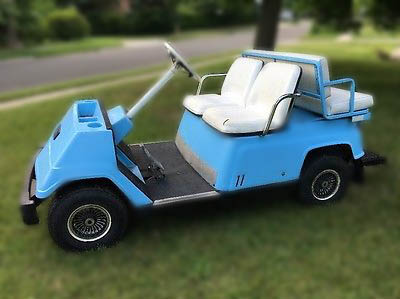
Yamaha entered the golf cart scene in 1978 with the model G1, which sported a 2-cycle gas engine while Club Car was not even producing gas-powered carts. The main competition was E-Z-Go and Harley Davidson (AMF). The body style changes over the years are a little more subtle than those of the E-Z-Go and Club Car. The following year (1979) they came out with the 36-volt electric model.
In the mid-1980s Yamaha built a manufacturing facility in Newnan, Georgia approximately 185 miles from Augusta, home to Club Car and E-Z-Go. Here they made their first four-cycle gas cart, the model G2 which was introduced in 1985. It was also available as a 36 volt electric.
Torakusu Yamaha was fascinated by western musical instruments and created an organ of his own design. The early model was panned by critics for being poorly tuned, so Yamaha spent many months learning tuning and musical theory. Nippon Gakki Co., Ltd., the forerunner of today’s Yamaha Corporation, adopted the tuning fork into its logo in 1898. The current three tuning forks logo can be seen on the front emblem of the golf cart today.
Frequently Asked Questions
When was the golf cart first invented?
The first golf cart was invented in 1932 by Lyman Beecher, but they only became popular in the 1950s when Merle Williams introduced them in response to the post-WWII gasoline shortage.
Who manufactured the first commercially successful golf carts?
The Marketeer Company, founded by Merle Williams, manufactured the first commercially successful golf carts.
What was the initial purpose of golf carts?
Initially, golf carts were designed to assist disabled golfers. It was only later that they became a standard mode of transportation on golf courses.
How has the design of golf carts evolved over the years?
The design of golf carts has evolved significantly since they were first introduced. The first models were simple and only designed for two people. Over the years, they have evolved to include features such as windshields, headlights, turn signals, and even GPS systems. Today, you can find golf carts that can accommodate more passengers and carry more equipment.
Are golf carts only used on golf courses?
While golf carts were initially designed for use on golf courses, they are now used in various settings including airports, universities, and large businesses to transport people and goods over short distances. They are also popular in retirement communities and in places with large-scale outdoor events.

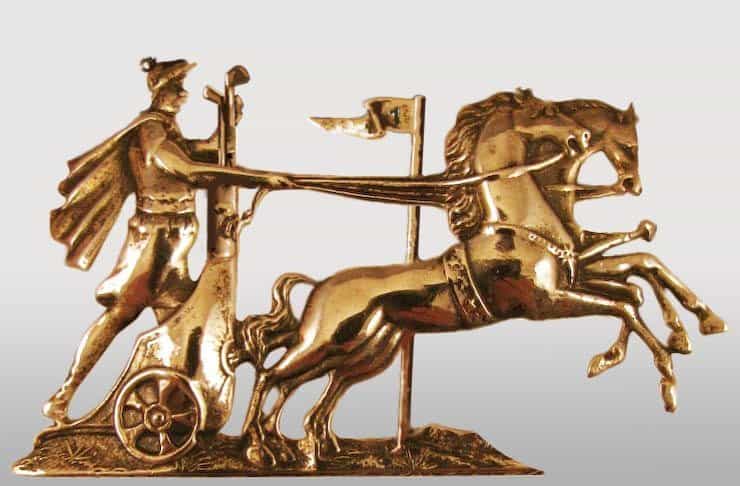


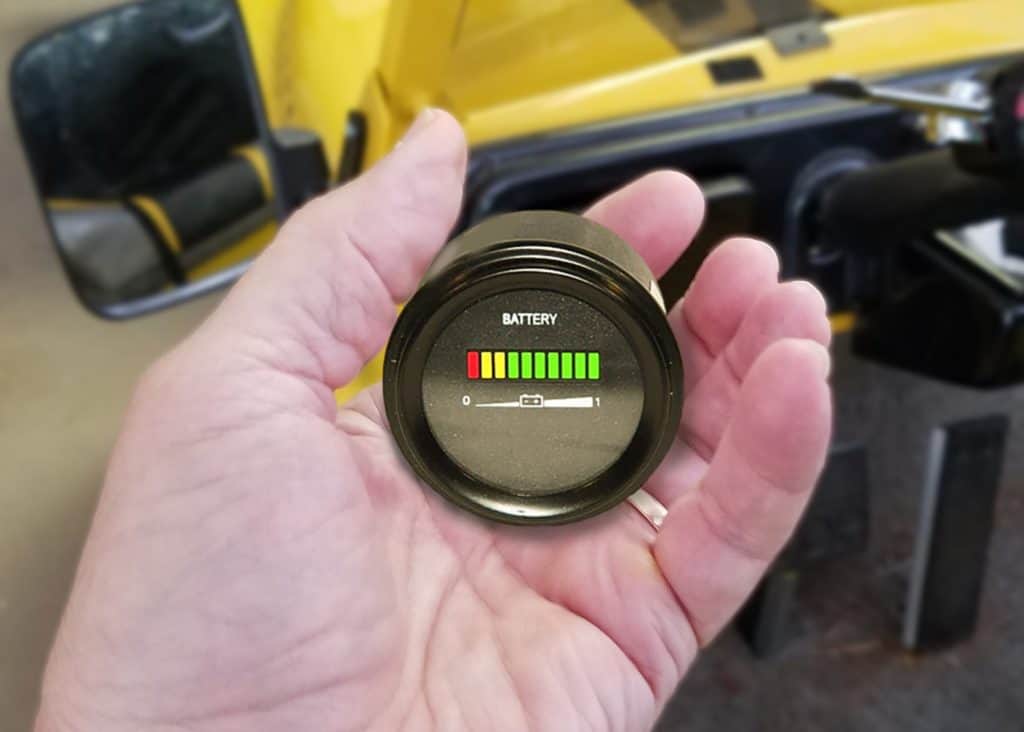
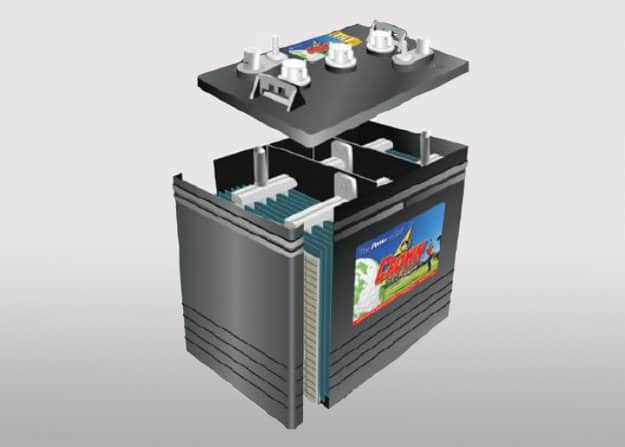
Leave a Reply